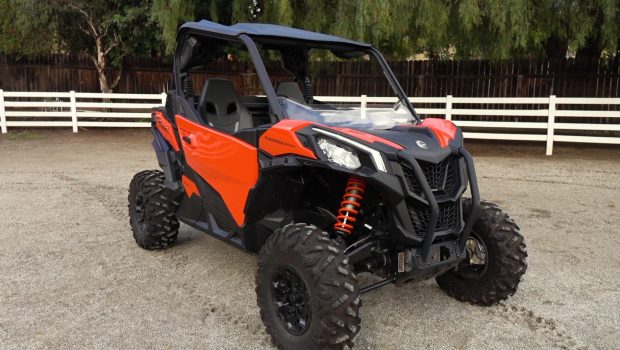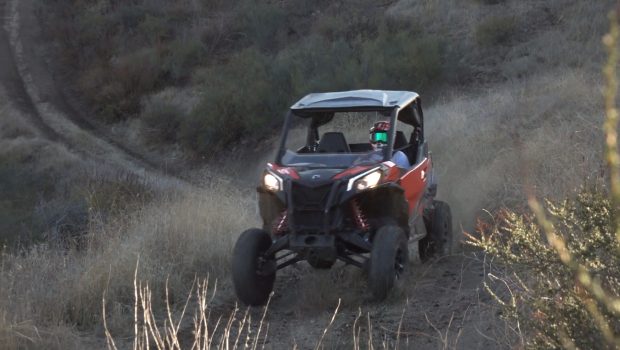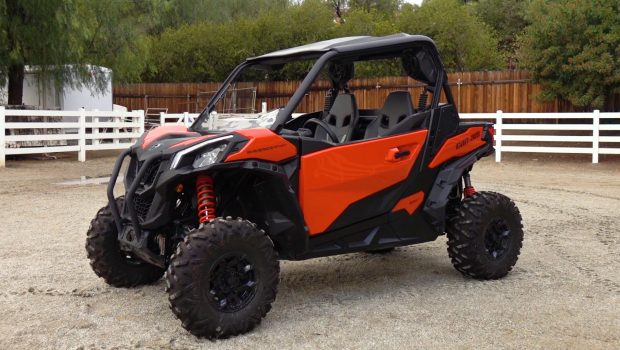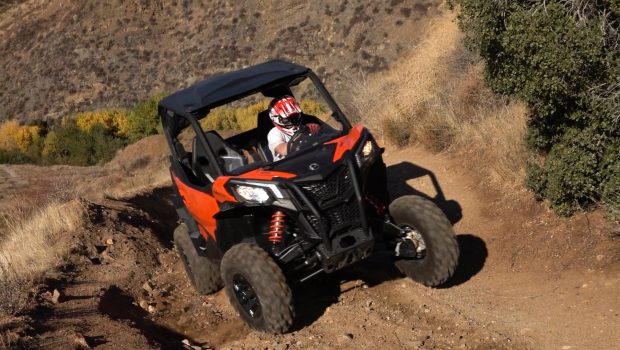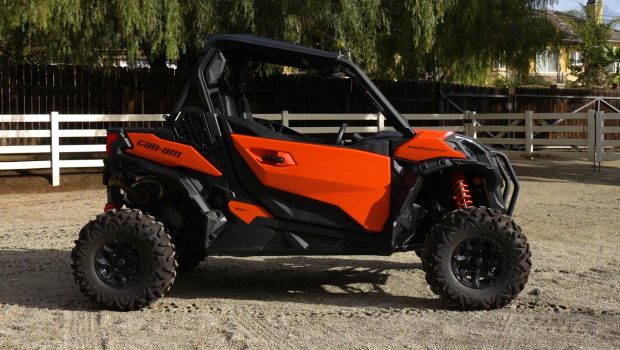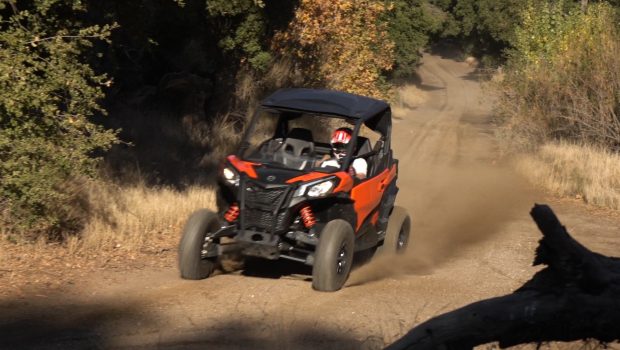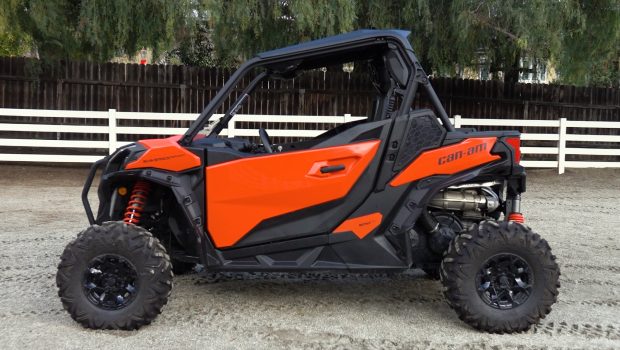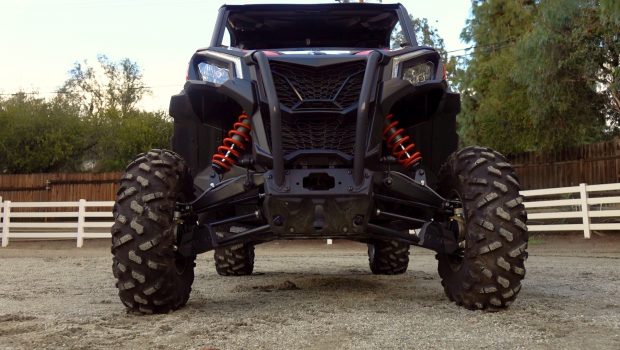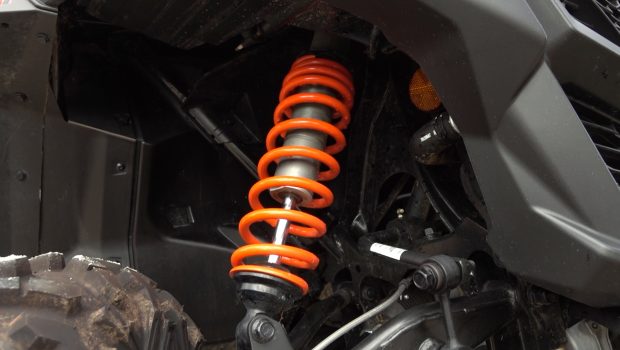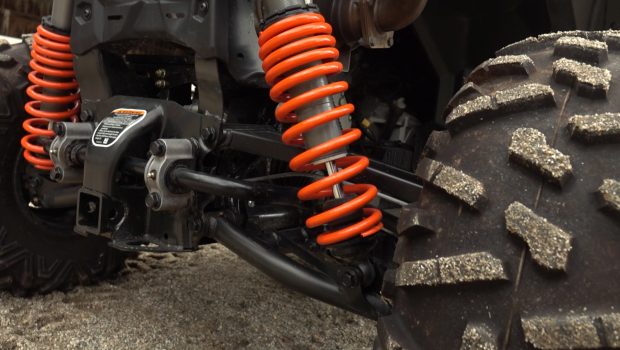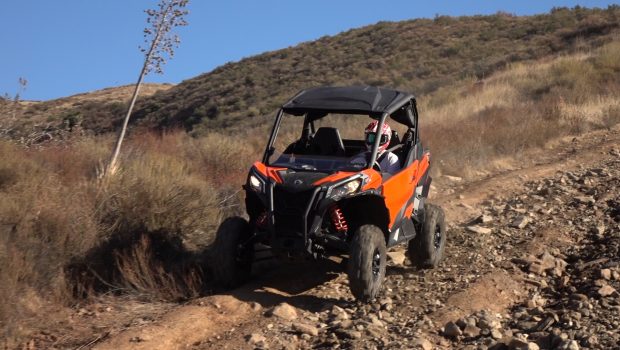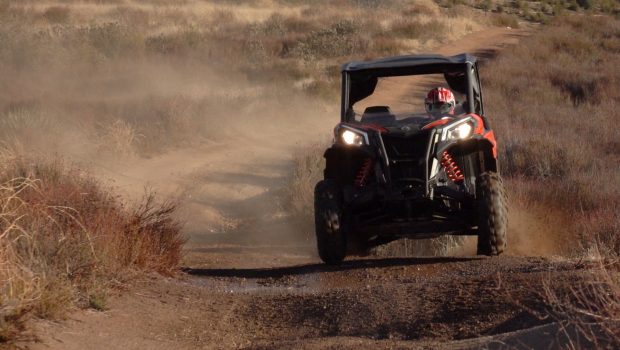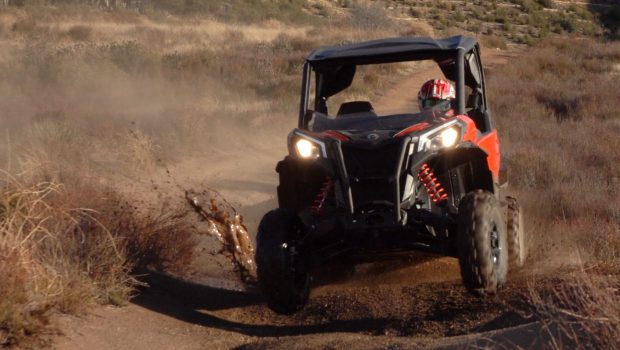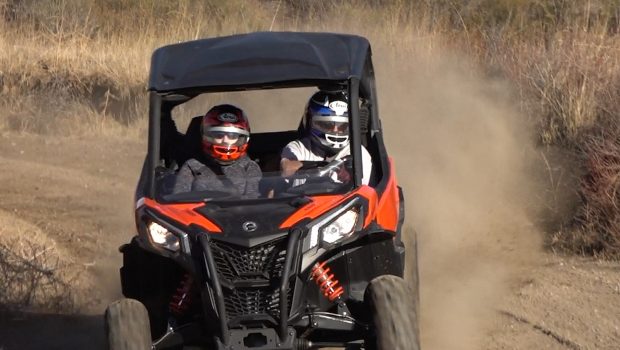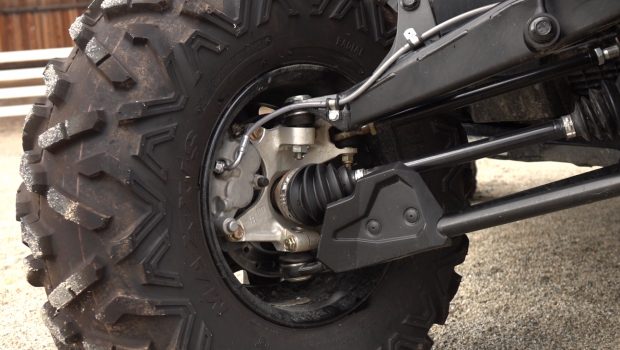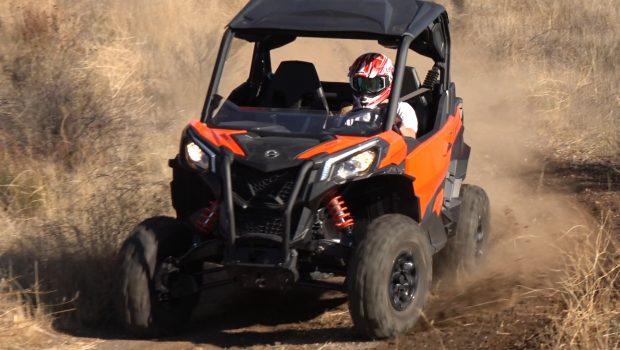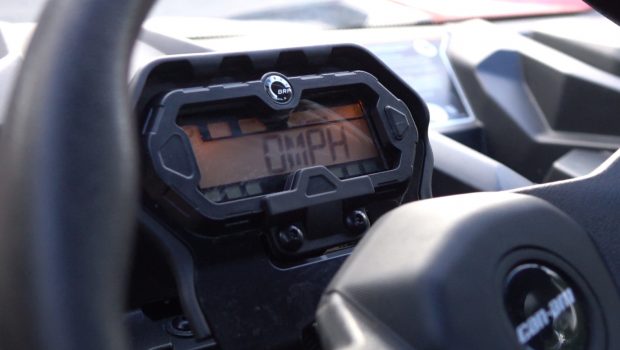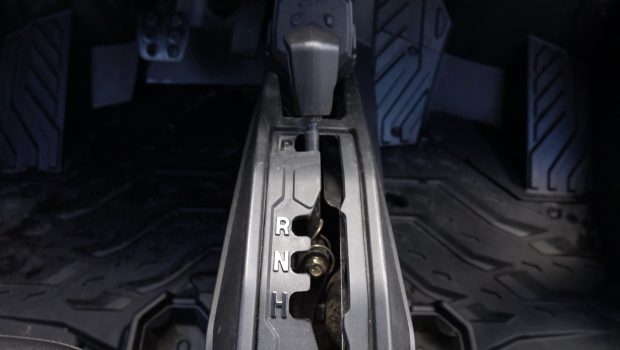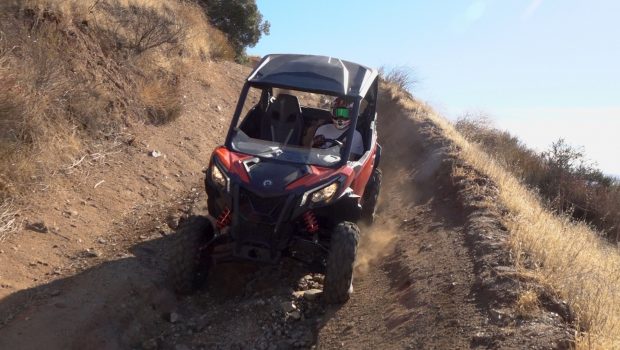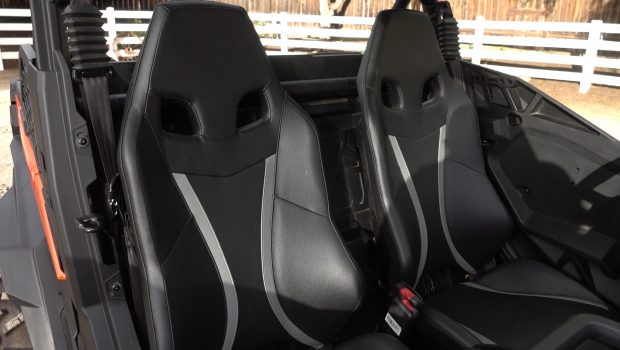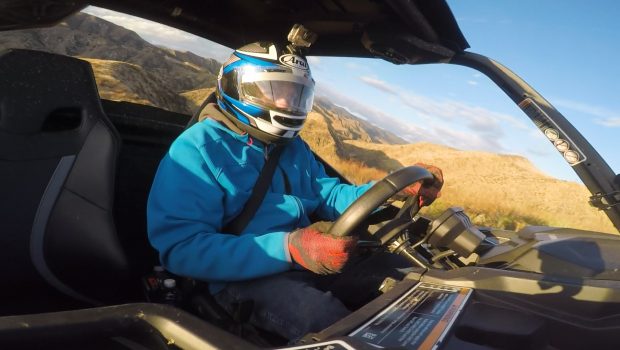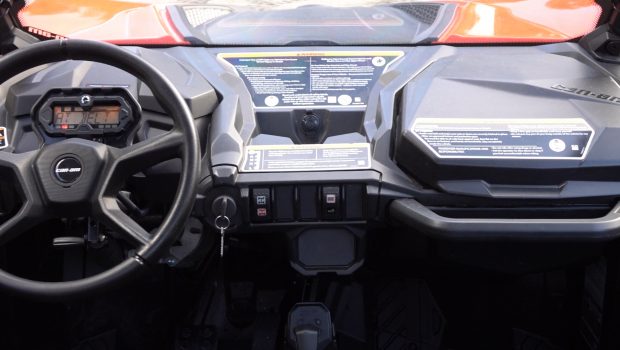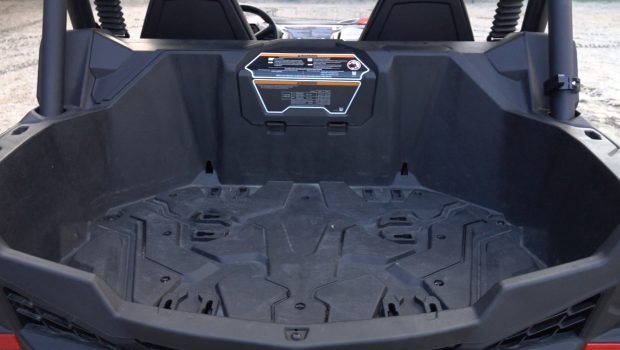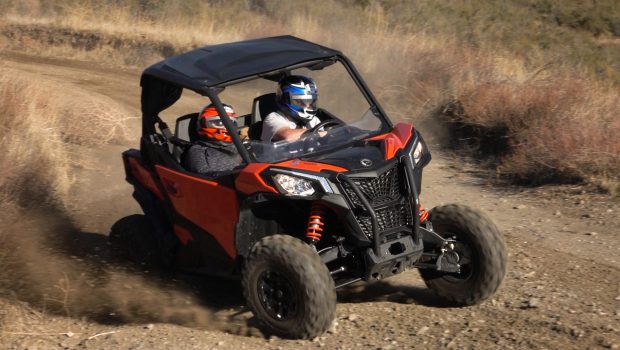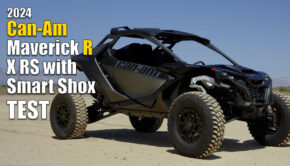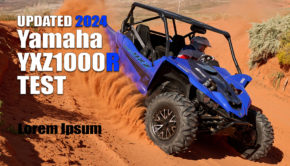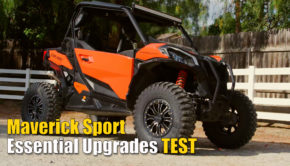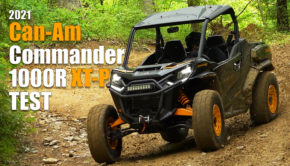Published on July 27th, 2020 | by Joe
2020 Can-Am Maverick Sport 1000R Test Review
2020 Can-Am Maverick Sport 1000R Test
Summary:
4.1
6 Month Test
2020 Can-Am Maverick Sport 1000R Test Review
Can-Am’s outstanding 2018 Maverick Trail brought a higher level of refinement and comfort to the 50” sport segment. Based on the Maverick Trail, one year later Can-Am released the Maverick Sport, a 60” class sport SXS that could easily be argued as best in class.
The 60” Sport SXS segment offer’s legitimate, well rounded performance. Compared to 64” wide machines, the 60” class leaves a little more room to carry speed through tighter trails. With adequate power, suspension travel and a lower center of gravity, 60” class machines are speedsters in the twisty sections, making this slightly downscaled segment a lot of fun to drive in the trees.
For the past 12 months we’ve been putting the Maverick Sport 1000R to the test, remaining unchanged for 2020. So, after putting some serious time in the driver’s seat, the producers of the number one Polaris RZR S 1000 test on YouTube bring you our review of the 2020 Can-Am’s Maverick Sport DPS 1000R
Options
For 2020 Can-Am continues offering the original three versions of the Maverick Sport, the 75hp 1000, 75hp 1000 DPS, and 100HP 1000R DPS that we’re testing. The DPS models receive Can-Am’s Dynamic Power Steering, Faster locking Visco-Lok QE auto-locking front differential, selectable Sport and Eco throttle modes for the gas pedals drive by wire system, color accented seats, Unique Maverick X3 style LED running lights, and painted body work.
Can-Am also offers a 60” wide four-seat model, the Maverick Sport MAX, in addition to three new 64” wide, purpose-built, two-seat Maverick Sport models as well, the racy, trail ready Maverick Sport X XC, mud specific X MR and rock crawling X RC. The Max and X models all utilize the 100hp Rotax powering the 1000R
Engine
The 1000R is powered by a naturally-aspirated, 976cc, V-twin, engine featuring 4-valves and double-overhead-cams per cylinder Electronic fuel injection allows the use of Can-Am’s Intelligent Throttle Control, drive-by-wire gas pedal designed to help filter out unwanted gas pedal bob. DPS models have selectable throttle modes, Sport and Eco. Eco mode offers up to 90% of full throttle and is tuned to filter out abrupt throttle inputs from riding in rough terrain.
Along with a 25% more power at 100hp, the 1000R enjoins an 11 ft-lb increase in torque to 71 ft-lb. The increase in power comes from the use of a different head, valves, pistons, revised intake, revised exhaust system, fuel mapping and ECU calibration. Can-Am is claiming that 0-60 mph times are 15% faster than its closest competitor, which must be the 100hp RZR S 1000. Although, the Can-Am is a claimed 150lbs heavier with a dry weight of 1,405lbs.
The transmission is based on the heavier and more powerful Maverick X3. Can-Am’s Quick Response System equipped, CVT transmission features high and low ranges plus neutral, reverse, and park. Air intakes for the engine and CVT are mounted high, outboard behind the cockpit with a second CVT intake on the 1000R for additional cooling. Its transmission also features different clutch hardware and calibration in addition to revised gearbox ratios.
Electronic belt protection measures RPM, engine power and vehicle speed in high-range, to determine if the belt is under too much load. It then sends a signal to the driver’s display to change into low gear to protect the belt. Can-Am’s Electronic Hill Descant Control provides engine braking.
There are two drive modes, 2WD and 4WD without an unlockable rear differential like the Maverick Trail has. In four wheel drive the DPS models benefit from Can-Am’s quick engaging, QE, Visco-Loc front differential, which locks in both front wheels when one starts slipping, then progressively unlocks the front differential once traction is restored.
The engine delivers its power in a very fun manner with its power characteristic, clutching and fuel mapping dialed for sporty driving. It gets you moving quickly off the line and is a little ripper exiting turns pushing you back in your seat. RPM’s build pretty quickly right off idle, continuing on throughout the healthy midrange which seems to last for some time, making short work of straightaways when racing from corner to corner. The Sport can hold its own against some slightly more powerful machines on fast smooth trails, easily cruising above 60mph.
Eco mode really makes difference when negotiating chunky terrain. It improves traction, especially appreciated while climbing. Can-Am’s Visco-Loc QE front differential provided predictable grip whether cruising the trails or crawling through the rocks. Engine braking is well balanced helping control momentum at lower speeds without being overpowering at higher speeds.
Chassis and Suspension
The chassis and cage are constructed of DP980 and HSLA steel. A bumper protects front end with the underside of the frame protected end to end by plastic skid plates. The Sport’s dual A-Arms front and Torsional Trailing Arm rear suspension add 5” width per side compared to the Maverick Trail, creating its 60” width. Retaining the Trail’s 90.6” wheelbase, its 11.6” longer than the RZR S 1000 and in the middle of the wheelbase range of the 64” class. Can-Am says the longer wheelbase and rear mounted engine position have allowed them to optimize weight distribution for cornering and high speed stability, at 42% front and 58% rear. The tires protrude at both ends of the car, allowing for some pretty extreme approach and departure angles for hills and obstacles.
Preload adjustable Fox, Podium 2.0 shocks are used all-around controlling 11.5” of wheel travel up front and 12.0” out back, lacking the reservoirs and compress damping adjustment found on the RZR S 1000
Sway bars are found at both ends to help fight body-roll. DPS models have Can-Am’s Dynamic Power Steering to lighten steering effort and reduce bump feedback.
Mounted on cast aluminum wheels, 27×9-12 front and 27×11-12 rear Maxxis Bighorn 2.0 tires are light weight and proven to perform well nearly everywhere. 12”of ground clearance for the Maverick Sport is within ½” of the RZR 1000 S.
The Maverick Sport’s suspension delivers exactly the type of plush ride most SXS enthusiasts are looking for. It does well at taking the edge off small square edge hits from rocks or roots, providing a ride that’s pleasant on long drives. Small rollers, acceleration and braking bumps and small leaps are all handled in stride, providing you with the freedom to cruise along or moto through moderately rough terrain doing well at holding up under G-outs and resisting rolling in turns. Overall we find its ride plusher than the RZR S 1000 and the trail focused Honda 1000X.
60” of width, a low center of gravity, dual sway bars, good suspension, tires and more add up to a solid handling SXS that will inspire beginners and reward seasoned drivers. Cornering stability is rock solid and better than you’d expect from a 60” wide machine. The Bighorn tires and Visco-Loc 4wd provide predictable steering. Power steering adds to the handling requiring minimal input and getting rid of harsh feedback. Stable handling with snappy power and clutching make the Sport a predictable slider, with the long wheelbase taking the edge off the point between driving hooked up or sliding, improving cornering predictability.
Stability is very good on side hills and its long wheelbase allows you to climb and descend with confidence. With minimal line selection ground clearance seemed good in spite of the Sport’s long wheelbase.
Brakes
The Maverick Sport is stopped by hydraulic disc brakes with 220mm rotors and dual piston calipers at all four corners. Steel braided brake lines further enhance braking power. Power and feel are both excellent and fading wasn’t an issue.
Interior and Other Details
in addition to more robust inner and outer door handles the Sport’s half doors offer 2.6” additional room per side, providing notably more room inside the cockpit compared to the Maverick Trail, These doors can be retrofitted onto the Maverick Trail but will exceed the machine’s 50” width. Sealed to help keep the elements out, they’re some of the nicer factory doors on the market.
The driver’s seat can be slid 5” fore and aft and the steering wheel offers 25° of tilt adjustment. A backlit digital display tilts with the steering wheel, displaying speed, vehicle and trip information. There are two garb points for the passenger that we wish were adjustable. Two angled footrests for the passenger and one for the driver for bolstering in rough terrain and downhills.
With three-point, anti-cinch seatbelts standard, the sport style seats offer good comfort and support for an OEM seat. They feature pass-through for easy four-point harness instillation with mounting tabs on the cage.
Ample elbow and leg room allow even tall drivers to get comfortable in the cockpit. The cockpit makes you feel one with the machine. Low mounted seats provide a better feel for how the machine is handling while lowering its center of gravity. The steering wheel feels sturdy and is ergonomically well designed. This cockpit encourages you to drive hard delivers a level of comfort beyond its class or price point.
There’s a class leading 5.3 gal of dry storage available inside the cockpit with driver and passenger side storage boxes mounted high for easy access and viewing. There’s a small tray below the DC outlet in the center dash, and cup holders are located on the floor on the driver and passenger sides.
Unique LED daytime running lights make you more visible to others during the day. Visibility at night is provided by dual 55 watt headlights up front. LED tail and brake lights are found out back.
Storage and Towing
In addition to the interior storage the Maverick Sport’s sizable cargo bed with 4 anchor hooks and drain holes plus 8 LinQ quick attach points for Can-Am accessories. Its bed has a 300lb capacity. We appreciate the added versatility of the 2” hitch receiver that’s rated to tow 1,500lb.
Maintenance
Can-Am worked to make access to all of the regular maintenance points easily accessible, allowing owners to more easily maintain their Maverick. They’re claiming that the Sport can operate for a year with zero maintenance and no break in period needed. We say No Way! Spend a couple days driving gently accompanied by a couple closely spaced oil changes. Protect your investment and bring it into the world gently.
Accessories
Our machine came outfitted with Can’Am’ accessory Sport Roof, something we feel should come standard on any premium machine. Nice roof though. The accessory half windshield greatly distorts what’s in front of the machine making it less than ideal for technical driving, especially if you’re shorter. We are definitely fans of the Wet Sounds audio system available through your Can-Am dealer.
Conclusion
The Maverick Sport 1000R DPS comes at a premium price for the 60” segment, costing $1,000 more than the RZR S 1000 with its fancier suspension. Although, the Maverick Sport seems a bit more refined than the RZR S 1000. Compared to Honda’s 64” wide Talon 1000 X or the RZR S 1000, the Maverick Sport delivers a plusher ride and a more spacious interior than either. Overall we believe that the Maverick Sport delivers a well-rounded great performing package that refuses to stay in its own lane. It’s simply a great sport SXS regardless of class.
If you’re intentionally looking at 60” class Sport SXS as a way to slip more quickly through tight trails while retaining a plush ride and confidence inspiring handling, the Can-Am Maverick Sport 1000R is still the newest kid on the block and quite possibly the one you’re going to want to hang out with the most.

